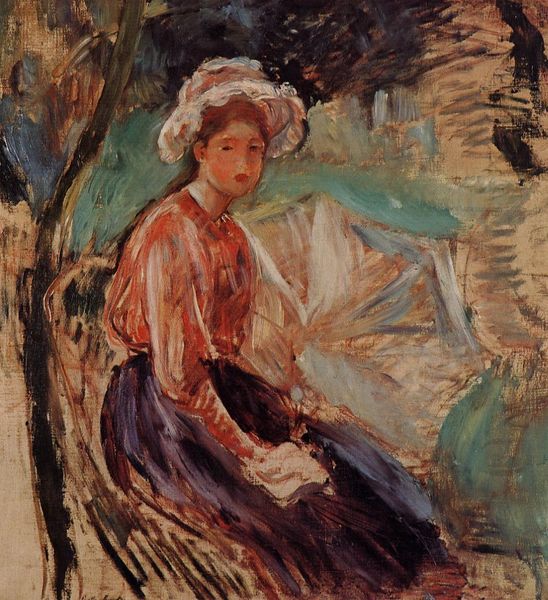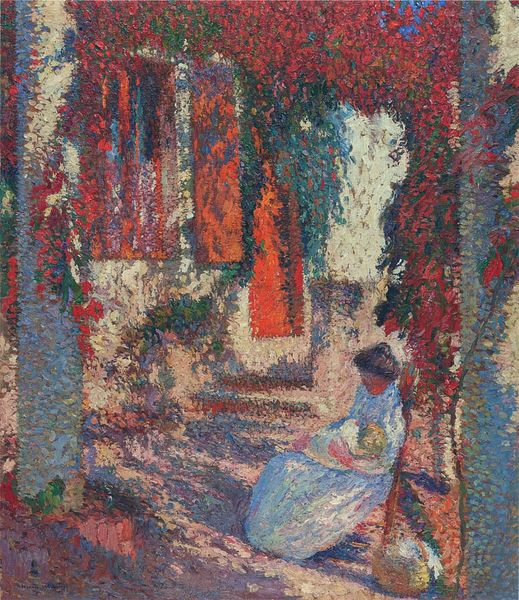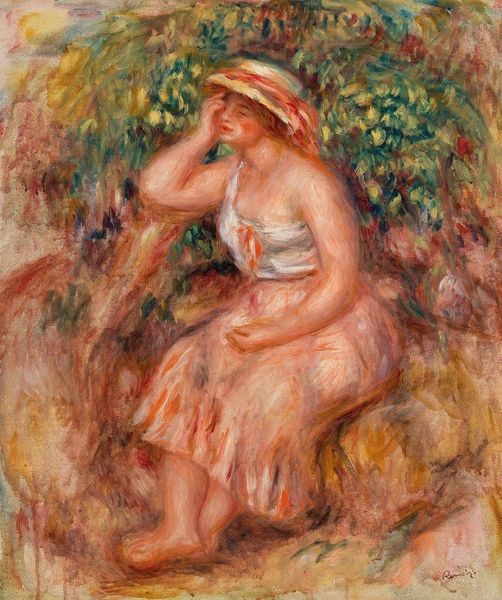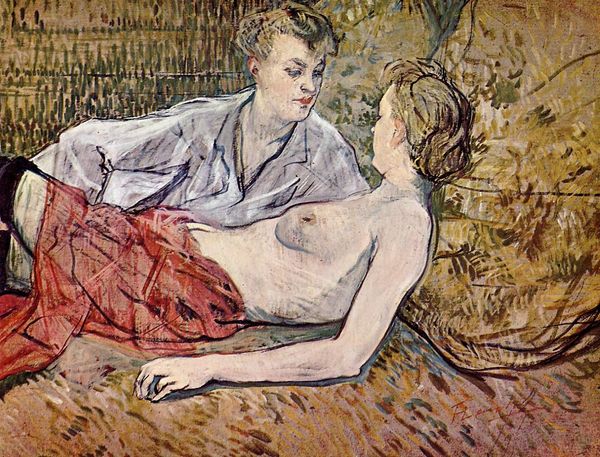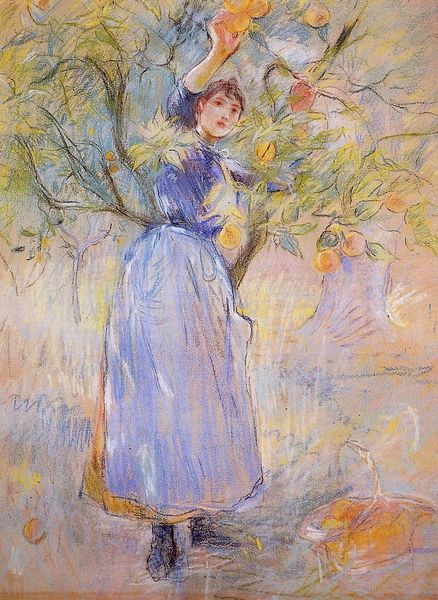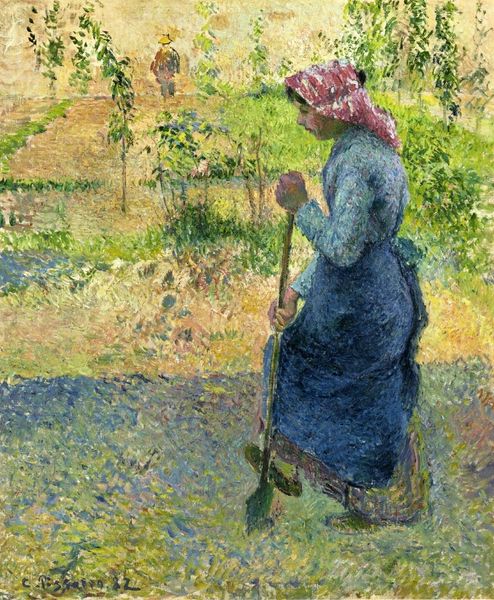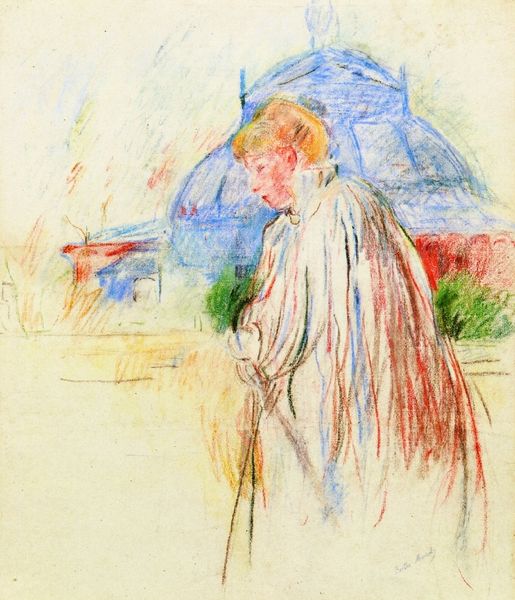
Copyright: Public domain
Curator: Toulouse-Lautrec's “Woman in Monsieur Forest's Garden," created around 1891, strikes me as remarkably delicate and melancholic. What do you make of it at first glance? Editor: The initial impression is definitely one of quiet introspection. There’s a hazy, dreamlike quality in the pastel hues, and the figure seems almost swallowed by the landscape. Curator: Precisely. Notice the almost sketch-like quality in the rendering of the figure— the economical use of line, the way he suggests form without fully defining it. The rapid strokes are almost shorthand for the body beneath the clothing, highlighting a visual tension between the surface and what it conceals. Editor: Right. And it’s crucial to recall Lautrec’s milieu – the cafes and theaters. I’m interested in how that filters into even what seems like a personal, intimate portrait like this one. The garden setting offers this veneer of bourgeois leisure, but her gaze carries something deeper. Is she comfortable in that garden? Is Lautrec playing with class commentary by presenting the female figure out of her depth? Curator: You raise an important point about context, and what seems intimate is possibly constructed, stylized. I would argue that the spatial arrangement reinforces that idea. See how the background blends seamlessly with her form. The trees mirroring the contour of her back, almost making her a piece of the garden’s architecture. Editor: The swan in the background feels incredibly pointed. In literature and mythology, the swan is often associated with purity, transformation, and even tragic love. Its presence begs the question of identity—both for the sitter and the artist himself, observing from his position. Curator: The swan, with its symbolic weight, almost mocks any quest for a pure, unified identity within the canvas. In addition, observe the material itself. Lautrec’s usage of pastel and pencil on board amplifies the ephemeral feeling that’s present in this scene. It’s light yet there is a structural intensity because it all appears fragile, transient. Editor: So, a brief look at “Woman in Monsieur Forest’s Garden” reminds us of Lautrec’s masterful layering of observation with cultural and political nuances. The portrait allows viewers to reflect on beauty as performance as well as individual experiences shaped by class and gender norms of that era. Curator: Absolutely. For me, the success of the work lies in that precarious balance—it hints at so much, and says so little.
Comments
No comments
Be the first to comment and join the conversation on the ultimate creative platform.
